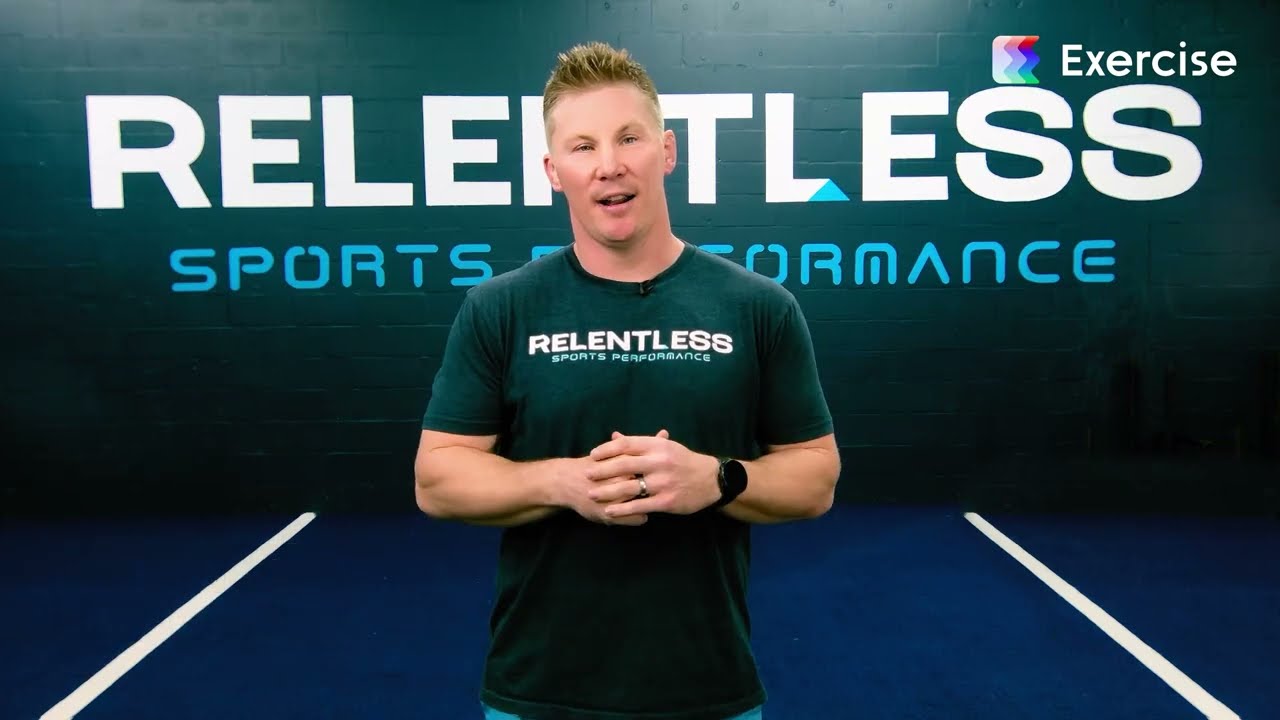How to Run a Gym Effectively (17 Steps)
Learn how to run a gym effectively with this step-by-step guide to managing a gym.

Full of gym management tips you can put into practice with your gym business, this practical list of management tips for gyms can help increase gym revenue and profitability. Running a gym can be a challenging endeavor, but with the right strategies and techniques, you can learn how to manage a gym effectively, ensure its success, and make your gym stand out.

In this comprehensive gym management guide, we will explore the key elements of effective gym management, from creating a strong vision and gym mission statement to embracing technology and fostering a positive community atmosphere (check out our guide to the best gym mission statements for ideas).
Learn the essential gym owner tips and strategies on how to effectively run a gym and ensure its success, then be sure to utilize the best gym management software for gym owners who want to manage their entire gym business in one place.
Offer a premium gym member experience with amazing gym check-ins.
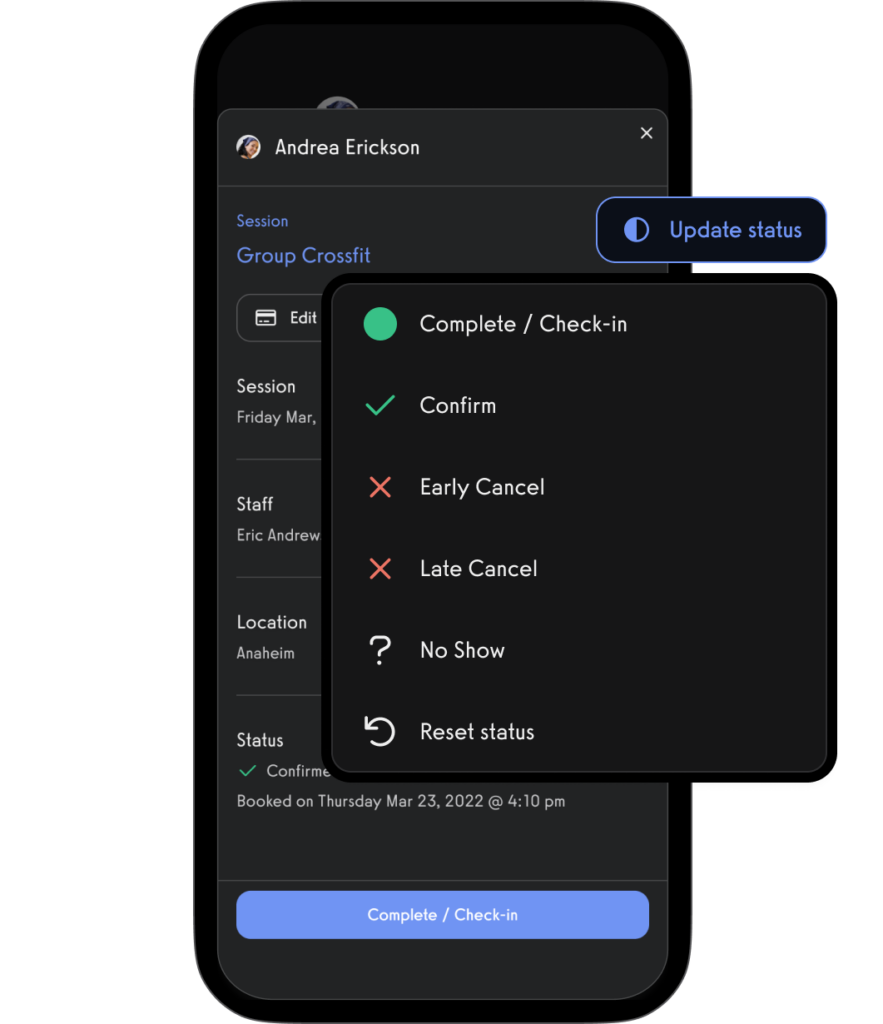
Easy gym payment processing.
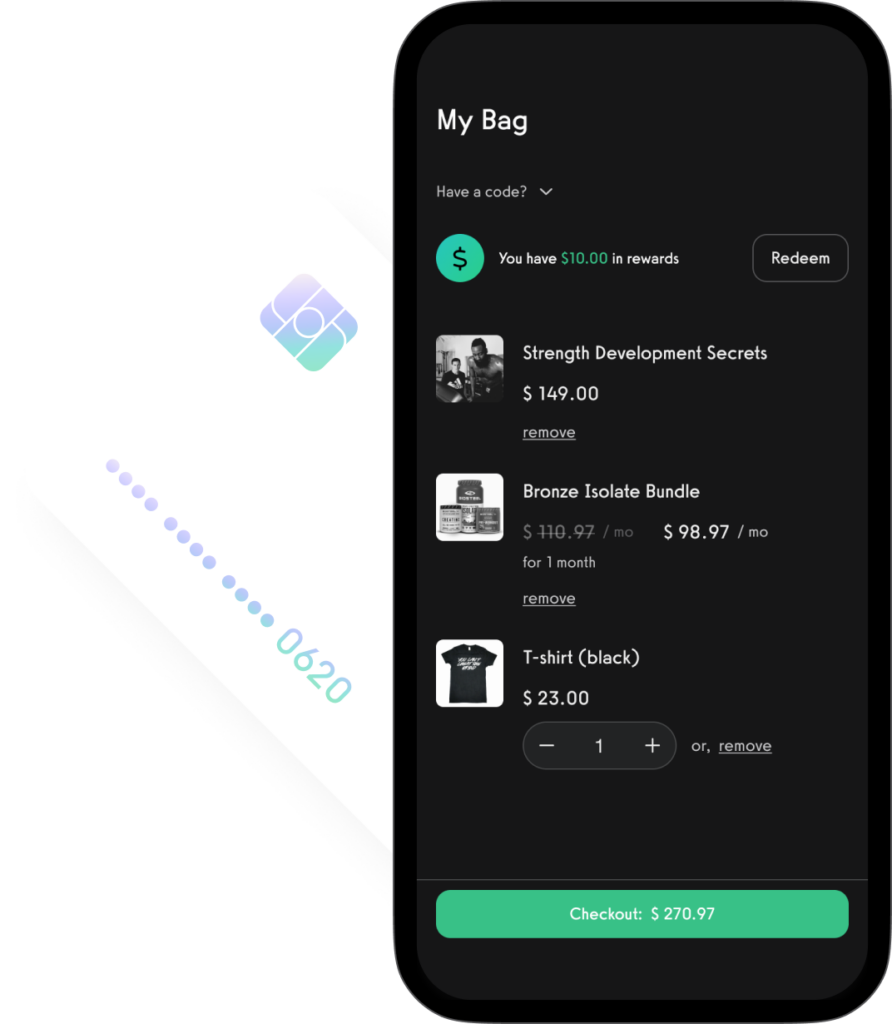
Quick and seamless gym booking and scheduling, online and in-person.
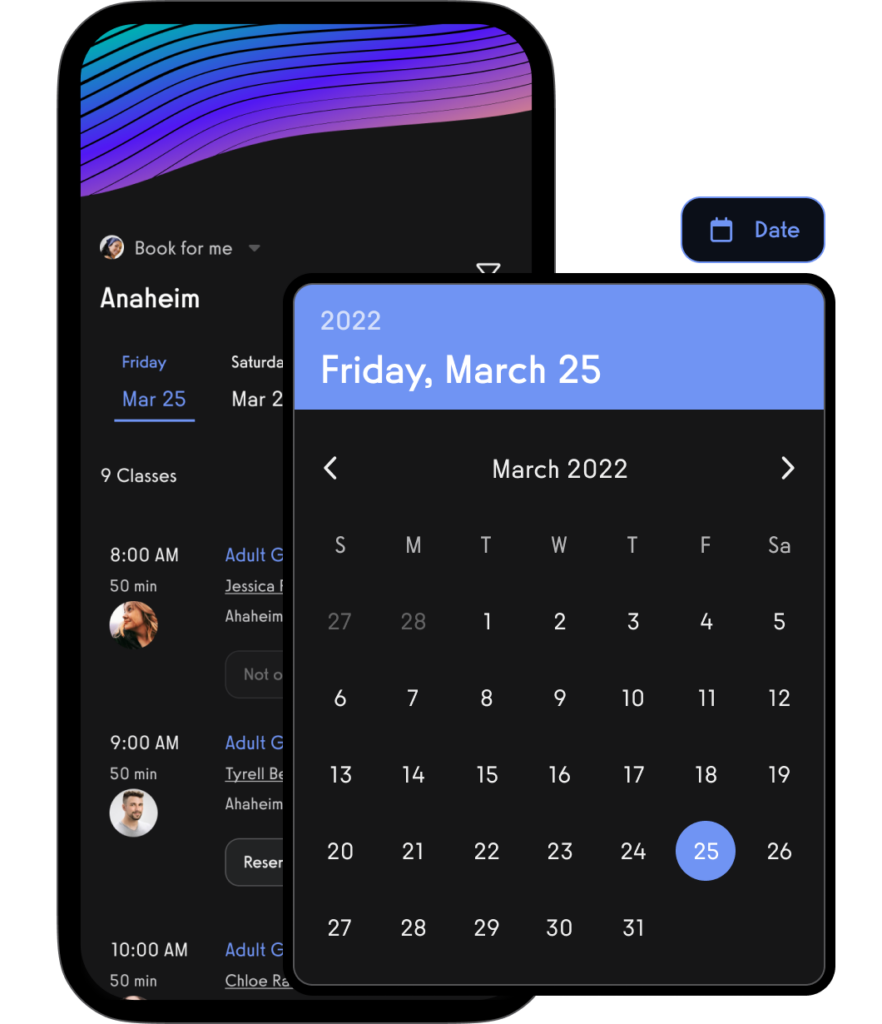
All though your very own custom-branded fitness app that elevates your gym’s brand, giving your gym members a consistent branded experience.

Take your gym to the next level with the best gym management software platform: Exercise.com.

Gym Management Best Practices
- Market your business in a way that holds true to your long-term vision for it, not what’s expedient at the moment.
- Make your gym a community and members will stay loyal and promote it.
- Invest in developing your employees for their benefits and your gym’s.
- Close more clients with two strategies that help you overcome sales anxiety.
If you manage a fitness facility or particularly if you own one, the stakes are too high to depend on trial-and-error learning for how to optimize the business and make it a place where physical and financial success is achieved. You can take valuable insights from others in the field to instantly upgrade how you operate.
In this guide, we will be sharing the best advice to help new and existing gyms run smoother, increase revenue, and ultimately have a positive effect on more of the people who work and train there. You won’t want to miss any of these unique tips!
Marketing
#1 – Set an Identity and Stick to It
What sets your gym apart from the many others a prospective customer might join? Before you can communicate it to them, you have to know the answer yourself! Think of how you want to be perceived and what will give you not only financial success but also satisfaction.
An identity can be based on a certain type of methodology, the atmosphere you create, or the population you serve. You could be anything from a Pilates studio to a blood-on-the-bar hardcore powerlifting gym, but once you determine who you are stick to that so that people can clearly identify what you do and how your gym is different from the competition.
Check the video above where Dean, Kellie, and Tony talk about the importance of finding your niche and identity.
Read More: Gym Marketing
#2 – Advertise Selectively
When you own or manage a gym, you’re flooded with pitches for advertising opportunities. From spots on the local high school scoreboard to radio ads, many organizations will approach you to sell advertising; be prepared to say “No” most of the time.
Just because you’re offered the spot doesn’t mean it’s a good call for your business, it’s just the salesperson’s job to ask as many businesses as they can and sell ad space to any who bite. Contrarily, it’s your job to be selective and only commit money to ads that have a high return on investment.
Don’t be sold on how many people will potentially see an ad, decide based on whether the potential viewers will be high-quality leads for your business. Case in point, if your potential clientele is a narrow group, broadcast advertising like billboards or radio ads are likely a waste. Instead, you should narrowcast by aiming ads only where you have potential customers.
#3 – Leverage Professional Help
Gyms just getting off the ground or struggling financially need to do as much free DIY marketing as possible but if you have the room in your budget, getting the help of an advertising agency can be a worthwhile investment. Before you think, “What can they do that I can’t?” consider this:
As a fitness professional, you can provide a superior result for clients compared to what they’d achieve on their own even though many people likely ask themselves, “What can a trainer do that I can’t?” They simply aren’t aware of how much more you know about training than they do. Now, the shoe is on the other foot with you as the client. Remember that an advertising professional knows their game every bit as well as you know the fitness game.
Find a reputable fitness marketing agency with a track record of success, preferably one that has worked with fitness professionals in the past, and do a consultation with them to learn what they can offer you. In this day and age, online digital marketing is the gold standard, and professionals in this arena can precisely target your audience with ads and implement processes for turning viewers into clients with much more control and sophistication than any form of print media.
Read More: Best Fitness Marketing Agencies
#4 – Represent Your Business With a Well-Designed Website
Far more people will research your gym online than will walk in your door to ask for information. It is highly likely that your website will be where they get their first impression and it’s up to you to make it a good one!
Because many small business gyms are falling far short of their potential when it comes to the perception they create through their website, you can quickly gain a competitive advantage by investing more effort into yours. Your site should be visually appealing, user-friendly, and clearly convey information all while expressing your gym’s identity as mentioned earlier.
How do you make sure you have a website that’s up to par? You can enlist professional help with advertising if your budget allows, or, if you have an eye for design, take it on yourself. With inexpensive, easy-to-use tools like Wix and Squarespace which have great-looking templates to simply drag and drop your content into, there’s no excuse not to have a respectable site that makes a good impression.
Of course, you can always enlist the help of Exercise.com for a fully custom branded fitness app that can integrate with your website to capture leads, book sessions, sell products, and much more.
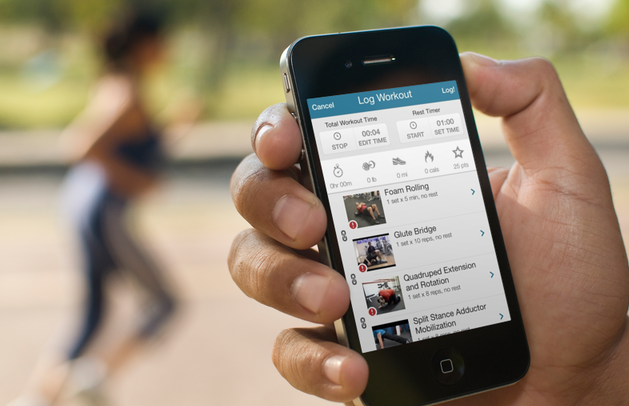
Read More:
#5 – Don’t Rely on Cheap Pricing Promotions
Free, Cheap, and Easy. You may expect these words to attract people to your gym and sometimes they will, but what happens every time is they lower the perceived value of what your gym offers. Think about it: If you ascribe a cheap price to something, what are you telling customers about the value of it?
I’m not saying never give a trial class or a reward for gym referrals, but don’t make it so often or so easy that people get the impression it isn’t worth much. If you do that, particularly as their introduction to your gym, it may be impossible to raise their opinion or their price of membership up to the level it really should be down the road.
What’s more, you need to consider who you’re attracting. Low price or No Commitment advertising attracts people who either don’t take fitness seriously enough to invest in it or people who are already looking for a way out as soon as they start. These members are of little value to your gym as they don’t contribute to the community, don’t refer others, and are the most likely to give you payment collection problems.
Particularly if you’re a small business, you don’t want to get into the discount price war. That’s the battleground of big-box gyms that choose the high volume-low quality strategy. The best way to compete is to offer a premium service and make sure it’s perceived as such.
Read More: Gym Pricing Strategy
Sales
#6 – Make Your Pricing Clear and Simple
In the modern marketplace for nearly any type of product or service, customers are used to having instant access to information. Giving them the run-around on pricing or making them go through several steps to get information can lose them before you even have a shot at making a sale.
You can avoid this pitfall by making your pricing and service options easy to understand and remember. For example, rather than tiered pricing for personal training sessions (1 per week – $70 each, 2 per week – $60 each, etc.) decide on the single figure your training is truly worth and charge a flat fee.
Gym owners and managers also must inevitably decide on whether or not to make their prices public. I strongly suggest you do it for two reasons:
1) It eliminates the risk of losing good prospects who just want to know a price before coming in physically,
2) Anyone who sees the price and thinks it’s too expensive was not a qualified customer for your business anyway. You’ve allowed them to filter themselves out before any time is wasted on a fruitless consultation.
#7 – Pitch the Pros of Your Business, Not the Cons of Someone Else’s
As tempting as it can be to put down your competition when speaking to a prospect, resist that urge! Sure, at the time you might get a head nod or an “Oh, I didn’t know that,” but in the long run, you’ll only hurt yourself.
Regardless of the validity of your criticism, prospects will remember you as being negative and will possibly perceive it as insecurity; especially if they’ve shopped around and had a good impression of the competitor.
Clients want to have a positive experience during their consultation appointment and during their hopeful future participation at your gym, so set up the situation in a way where they’ll remember you as the positive person who made them feel confident and capable.
What if the prospect asks you directly to compare yourself to the competition, how do you handle it?
Let’s take a look at a couple of examples that show the wrong approach and the right one:
⊗ The WRONG Approach
Prospect: To be honest, I’ve been shopping around and the other place I’m considering is BestBody Fitness. What do you know about them? How is this different?
Manager: Well, to begin with, I think they’re overpriced for what they’re offering. I see their videos on Instagram and it doesn’t look like anybody there knows what they’re doing – I honestly don’t see how they keep any clients. We do things totally different and, actually, a lot of our clients left BestBody to come to us.
✓ The RIGHT Approach
Prospect: To be honest, I’ve been shopping around and the other place I’m considering is BestBody Fitness. What do you know about them? How is this different?
Manager: I’ve heard both good and bad things from people who’ve been to BestBody, but since I haven’t been there personally, I don’t want to speculate or spread rumors. I just focus on trying to constantly improve what we do here and make sure everyone we train is on track to their goals. The important thing is where you see yourself being the most successful.
Read More:
- How to Sell More Gym Memberships
- How to Sell Gym Memberships Over the Phone
- How to Sell Gym Memberships Online
- Gym Membership Sales Strategies
- Gym Membership Sales Script
#8 – Maintain Price Integrity
Price integrity means two things:
1) Holding true to the value of what you offer by not undercutting the price
2) Every client that registers for the same service pays the same price
Thinking specifically about point number two, if your first thought is: “Of course everyone pays the same, don’t they always?” you likely have a good ethical compass but haven’t spent much time working in the fitness industry.
Unfortunately, it’s common practice for gym managers and salespeople to let their hunger for the sale override their sense of fairness and many companies support the practice of charging full price for some members and discounting for others. For both moral and practical reasons, this is bad business.
When members know they’re not being charged equitably, it drastically reduces their respect for and trust in your business. In turn, they won’t recommend you to anyone they know and likely won’t even consider renewing their own membership down the road.
What’s more, it is incredibly taxing and stressful for a staff member to keep secrets about the different prices people are paying. As a manager, you and your staff will be much happier and more satisfied working in a place with no secret deals where you can openly answer any question that arises concerning pricing.
Now you may be thinking, “What about sales and special promotions? When someone joins under those, can’t I give a discount?”
Yes, you can, but do so carefully and pay attention to how your full-price members will view the deal new members are getting. The last thing you want to do is alienate members who’ve been loyal supporters and there are two reliable ways to avoid that:
First, if you want to offer a new member discount, make it only on their initial costs at sign-up, not their ongoing monthly fee as this is what existing members will want to compare most. It will sit a lot better with them knowing they only missed saving money once, not every month.
Second, and preferable to the first option, is to not offer a discount, but an added value instead like complimentary personal training sessions. The key is to then offer the same bonus to your existing members as well. This not only keeps things equitable but also lets members know they are valued. As an added bonus, you may even upgrade more members to personal training from standard memberships.
#9 – Get Comfortable Talking About Money
Some gym managers are natural salespeople, the kind with charisma and self-assurance to spare who don’t get nervous in the sales situation. However, for many of us working in fitness, this does not come naturally and we have significant hurdles to get over when it comes to the monetary side of closing a sale.
It’s an all-too-common scenario: you’re in a consultation with a prospective client and the conversation has been going great, you’re totally comfortable talking fitness and goals. Then the moment comes when you have to transition to asking the person to sign up and pay you, now you lose your nerve and the confidence you had moments ago is gone.
It’s not just you who feels it, the customer sees your discomfort and reflects it too. The sudden awkward turn in the conversation can be enough to make them lose their excitement and fall back on the objections they already had in the back of their mind. Ultimately, the appointment ends with “I’m gonna think about it” or “I want to visit some other gyms before I decide”.
If that sounds like a situation you’ve experienced, you’re not alone. Many of us got into this field for our love of training and never cared to get involved in sales at all. But before you resign yourself to the thought, “I’ll just never be good at selling”, know that there are ways to get over your anxiety about discussing money. Here are the two most valuable strategies:
First, don’t project your relationship with money onto the customer. So you’re struggling to pay off student loans, pay rent, and keep the lights on; it’s understandable that money is an uncomfortable issue for you but don’t assume it’s the same for the customer. They could have money to spare and are ready to invest it in fitness if they find the right gym or trainer.
Second, you may lack confidence in the service you’re selling and need to step it up. To put it simply, you need to increase the quality of what you provide until you stop thinking “Is this worth the price?” and start thinking “Why wouldn’t they sign up?” (watch the video above where Kellie Davis talks about setting prices for your business).
When you know that you’re always going to give more value to the client than the price they’re paying, it will become much easier to ask them to pay it.
Financial
10 – Keep a Buffer in Your Budget
Think a gym can be successful in business just by being passionate about fitness and providing good training? Think again.
There are many very talented fitness professionals whose businesses have failed not because of failure to achieve fitness goals, but because of failure to prepare for financial hardships and unexpected expenses. You can minimize this risk by always leaving some buffer room in your budget.
Let’s start at the very beginning: you have a brand new business with a facility still being built and no equipment yet. Whatever funding you’ve received from a loan, investors, or personal savings, don’t assign a duty to every dollar.
Specifically, if you have a $75K budget to start the business, it’s a mistake to commit it all right away on $40K for renovations, $30K for equipment, $5K for rent and utilities. What will you do when the contractor ups the cost of his work from the estimate or you find out there are building code violations you’ll have to pay to fix?
The best way to prevent an unforeseen problem from derailing your business before you even get off the ground is to leave money aside that covers the inevitable unexpected challenges.
Keep the same thing in mind even if you manage a more stable business with a few years of operation under your belt. Never exhaust your bank account on discretionary spending; you never know when an A/C unit could break or a high-value client could move away and cancel their membership.
Read More:
#11 – Use Software That Streamlines Your Business
If your gym is going to operate efficiently, management software is a non-negotiable necessity. Without a platform that tracks memberships and billing, you would need another full-time employee just to do all the manual record-keeping and payment processing.
Fortunately, business management software has become sophisticated enough that you can do far more than the bare minimum of billing and membership sales. All-in-one fitness business software like that offered by Exercise.com combines everything you need to operate your business from a financial standpoint plus specialty fitness features like workout creation and remote delivery.
With Exercise.com’s software, you can integrate your in-person business with your online presence giving members the ability to sign up for services on their own and even purchase additional products to add revenue without any extra work by you or your staff.
What’s more, clients will interact with your business through a custom-branded mobile fitness app which opens up entirely new benefits your business can offer like performance health assessments and customized training that clients receive directly on their phones.
BONUS TIP: Always Know Your Numbers
Be sure your software can provide you with insights into the financial health of your company through instant access to reports. You should always know your gym’s monthly revenue, average member value, and member retention rate. These are equivalent to vital signs for your business and staying on top of them ensures you’re in the driver’s seat and not just along for the ride.
Read More:
- Best Gym Management Software
- How to Choose a Payment Processor for a Gym
- Best Gym Reporting Software
#12 – Keep Records of Everything
None of us got into a fitness career with dreams of handling accounting, taxes, and legalities but just like any other business entity, these are a necessary part of operating a gym. To pursue what you’re passionate about, you have to take precautions to protect the business from litigation and stay on the right side of your state’s Dept. of Revenue and the IRS.
Store membership contracts, waivers, cancellation letters, and even complaints; make sure you have a process for documenting and saving every bit of information on anything that goes on in your gym. On a routine basis, you’ll need financial records at minimum to file annual taxes but every business also has some degree of risk for more serious legal situations to arise.
Keep all the evidence you can to show that you’re doing everything in your gym above board. If, for instance, a member decides to dispute whether they gave you permission to draft their bank account, their signed authorization will be a handy document to have.
As another example, if a former client takes legal action against your business accusing you of causing physical injury to their back, their signed Health History Questionnaire where they indicated they had back pain preceding their training with you could save you from a major liability.
The point is not to expect the worst, just to be prepared for it. At the end of the day, it’s better to have and not need than to need and not have!
Client Relations
#13 – Make Your Gym a Community, Not a Building
Depending on the market you live in, customers could have dozens or even hundreds of other options for where to accomplish their fitness goals. How are you going to stand out when the new customer is shopping around? How are you going to ensure your current members are with you for the long haul?
The answer is giving your gym a sense of community.
Most people enjoy and benefit from working out with others and even those who prefer to be independent will still like the positives that come from a people-focused approach to fitness:
- Gym staff and members know each other by name
- Members help hold each other accountable to keep up their consistency
- Members look forward to the social aspects of visiting your gym
- Members identify with the gym community and take pride in it
These benefits add up to one major takeaway that the business gains from most: members who form relationships and think of themselves as part of a community stay longer, promote your gym, and are more successful in achieving their goals.
Think about it: if your selling point is just the facility and its great equipment, what happens when a newer gym opens with nicer equipment? If people were only attracted to your gym because of the low membership cost, what happens when another gym undercuts your price?
The answer in both scenarios is the member jumps ship because there’s nothing you’re providing that they can’t get somewhere else. Now factor in the emotional draw of being part of a community. The member will not leave their friends who count on them nor trade a coach who’s seen them through obstacles just to save $10 a month or to use a new toy.
#14 – Create Processes for Check-Ups and Testimonials
Keeping your members engaged and on track is critical to their success and your business’s. Don’t leave this to chance or think, “People will just come to me if they want to talk.” As the leader of the gym and its community, you should initiate those conversations and keep your finger on the pulse of your member base.
Do this with check-up appointments and have a process in place for making sure they’re done consistently and no one falls through the cracks. A check-up is a consultation with an existing client where you ask questions to find out about their progress, their outside life, and their overall satisfaction with your gym.
This shouldn’t be just another conversation during their workout, set aside time that is focused only on what they have to say and it will show you care and take their feedback seriously.
When it comes to implementing a process for check-ups, your goal should be to have a systematic method without your clients realizing it. Let me explain:
For efficiency and consistency, you should have a pre-planned schedule for when check-ups take place and set up a reminder or mark your calendar for when each member will have one. For instance, you could set one to be 60 days after they join, then every six months afterward for the duration of their membership.
A set schedule for these appointments makes it almost automatic on your end, but don’t reveal this schedule to members; from their perspective it should be a casual, organic moment when you ask them, “Hey Ryan, I want to sit down with you soon and hear how things are going. Do you have 15 minutes after your workout on Thursday?”
The check-up process naturally flows into a process for receiving testimonials and online reviews, which are crucial for attracting new members. These are something you must ask for and not assume members will think of doing on their own to help you. Here’s what you do:
During your check-up with a member, if they are enthusiastic and report being very satisfied with the gym, ask them in a natural way if they’d leave you a review on Google, Facebook, etc. You may say, for example, “That’s awesome! I’m glad things are going well for you. Would you be willing to share that story as a review online? When people see a 5-star review it goes a long way to helping us grow our community.”
The client who’s excited about the gym and grateful for your help will be more than willing to return the favor by taking a few minutes to give you a good rating. Also, note the mention of 5 stars, you’ve implied that’s what you need without awkwardly asking, “Will you give us 5 stars?”.
In the event that the member you see for a check-up isn’t very happy with their progress or excited about the community, of course, you will not yet ask them for a review. Instead, take their feedback and try to improve their experience between now and the next conversation so that you can get a great review then. Just taking the time to ask and pay attention to how they feel will already put them on the road to a better experience at your gym.
Read More: How to Get More Gym Testimonials
#15 – Encourage Referrals Organically
While many gyms have a system that encourages members to refer friends and family by rewarding them, there is a better way for small businesses to operate their referral programs. It all comes down to making it organic rather than transactional.
Here’s the typical process:
The gym has an ongoing program with an advertised quid pro quo trade such as “Refer a friend and get 1 month free!” This is displayed on posters in the gym or sent by mass email to every member. Then, when a member refers someone, they come by your office to ask if you’ve credited their free month.
The problem is that this is nothing more than a transaction to the member; when they send a person who then joins, a reward is expected and you oblige. This does nothing to enhance the relationship with the member or their loyalty to your gym. What’s more, some members will just spam an invitation to everyone they know to try to gain more shots at their free month reward. That leaves you with getting visitors who are not the right fit for your community or what you offer.
Now, here’s the better way:
Offer your members something of value they can gift to a friend like a $50 gift card to the gym (not to be used by the member). Because it has value and scarcity, the member will not give it to just anyone; they’ll select the person who is most likely to use it and will be a viable candidate for inclusion in the gym community.
Thus, you don’t merely get junk leads, you get pre-qualified prospects your members filtered for you who are highly likely to join since they have the gift card and stay long-term because they’re a good fit. Additionally, you’ve given the existing member an opportunity to be the awesome friend who hooked up the new member and will have a vested interest in their success and integration into the community.
There’s one more important step: you still reward the existing member for helping you out with the referral. The trick is that it’s not expected. It could go something like this, “Hey, Ryan, thanks so much for sending Josh our way! He’s a cool guy. He’ll fit in great here. I just wanted to return the favor so I got you a tub of that protein powder we talked about, enjoy!”
You can fill in any reward you like, the more personal the better, but you can also just discount their next month of membership. Because it’s a surprise and a personal interaction, it furthers their relationship with you. All in all, you’ve helped their friendship, gained a member, and built loyalty. Everyone’s happy, everyone wins.
Read More:
Employee Management
#16 – Empower Employees to Bring out Their Best
When you manage a gym and hire staff, sometimes you hit the jackpot and get a rockstar employee with enthusiasm for the job and a head for business, but this is the exception, not the rule. Most employees come in as middle-of-the-road performers who need your leadership to get them from average to good or from good to great. Here’s the best strategy to upgrade your people:
When you see a spark of potential or skill, call it out and amplify it. It can be a small thing and the employee doesn’t have to be great at it, the trick is when you recognize them for it they’ll begin to think of it as a unique strength and invest more effort into making it even better. It’s a self-fulfilling prophecy that works due to one’s natural desire to build esteem and garner respect.
For instance, let’s say you employ a high school student part-time to do cleaning and upkeep at the gym. So far, he’s meeting expectations but doesn’t seek extra responsibility or show ambition to do better. On his way out one day, you say the following:
“Before you go, Brad, I just wanted to say thanks for the work you’re doing. Keeping the gym in good shape makes members happy and it makes my job easier knowing I can count on you.”
To Brad, this will make a huge impression and even if he’d never thought of his job as that important, he’ll want to grow into the image you have of him: the dependable guy whose work is important to the gym’s success.
You can utilize this strategy with staff members of all levels and duties. You’ll see improved performance and, in some cases, make a significant impact on the employee’s future.
In my personal experience, I have managed multiple gyms and now own one. I trace my career path back to a moment 10 years ago when, as a personal trainer, my manager told me that she thought I had leadership potential and asked for my opinion on a group of new job applicants.
Read More:
#17 – Create a Plan for Employee Development
It’s important to the success of an organization to have capable employees and keep them around. You can’t rely on chance to make this happen; great employees may be hard to find and the ones you do have could leave for greener pastures if you don’t develop loyalty. This is where employee development comes in.
You should create an organized path for employees to learn new skills, upgrade existing ones, and stay inspired to improve. This is particularly relevant to anyone who works as a coach or salesperson.
If your business can afford it, it’s great to send trainers to seminars or contribute money to pay for a certification. Because of the expense, gyms that do this often set requirements on the trainer to ensure they’ll benefit from their investment. For example, a minimum of twenty PT sessions per week and at least a year of employment.
But don’t think that the learning experiences have to be formal and end with a certificate; you can create content yourself and give bi-weekly or monthly presentations on business, fitness, and leadership that will greatly benefit staff who have the desire to learn. You can also involve them in the process by having them share skills with each other.
This education combined with one-on-one mentorship will level up your employees and promote loyalty. After all, talented employees are much more likely to stay with you if the environment of your gym supports their growth and development.
The Importance of Proper Gym Management
Proper gym management is crucial for the long-term success of your fitness facility. It involves overseeing various aspects such as staff, finances, equipment, and member satisfaction. By meticulously attending to these areas, you can create a well-oiled machine that attracts and retains loyal members.
A well-managed gym not only ensures a safe and clean environment but also delivers exceptional customer service. It sets the stage for achieving your gym’s objectives and fosters a positive reputation in the community. Effective management is the foundation that allows your gym to thrive amidst stiff competition.
The Key Elements of a Successful Gym
Successful gyms have certain key elements in common that set them apart from the rest. First and foremost, they offer state-of-the-art equipment and facilities that meet the diverse needs of their members. From cardio machines to weightlifting equipment, a well-equipped gym ensures a variety of training options for individuals with different fitness goals and preferences.
In addition to providing top-notch equipment, a successful gym recognizes the value of knowledgeable staff. Hiring and training staff members who are passionate and well-versed in fitness is crucial for delivering excellent customer service and creating a welcoming atmosphere. Staff should possess the ability to motivate and assist members, offering guidance on proper form and ensuring safety during workouts.
Moreover, a successful gym understands the importance of building strong relationships with its members. It goes beyond offering a space to exercise by fostering a sense of community and belonging. By hosting social events, organizing group fitness classes, and providing opportunities for members to connect, your gym can create a supportive environment that encourages loyalty and long-term commitment.
Creating a Vision and Mission Statement for Your Gym
A clear gym vision and mission statement are essential for setting the direction and purpose of your gym. These statements will guide decision-making and shape the overall culture of your facility. Before crafting your vision and mission, take the time to reflect on what you want your gym to achieve and the values you wish to uphold.
Your vision statement should be aspirational and future-oriented, painting a picture of what your gym strives to become. It should inspire both staff and members, serving as a rallying cry for pursuing excellence and growth. On the other hand, your mission statement should succinctly state the purpose of your gym and the value it aims to bring to its members. It should capture the essence of what makes your gym unique and why people should choose it over other fitness options.
Remember, a well-crafted vision and mission statement serve as guideposts, aligning everyone involved in your gym’s success and ensuring cohesive decision-making.
Choosing the Right Location for Your Gym
The location of your gym plays a significant role in its success. Consider factors such as accessibility, visibility, and competition when choosing the right location. Ideally, your gym should be situated in an area with high foot traffic and ample parking options.
Furthermore, it’s essential to conduct thorough market research to determine if your chosen location aligns with your target demographic. Understanding the demographics and interests of the community will help you tailor your gym’s offerings to meet their specific needs and preferences.
Additionally, consider the layout and size of the space when deciding on a location. Ensure that there is enough room for all the necessary equipment and facilities, as well as functional spaces for group classes, personal training, and locker rooms.
Read More:
- How to Choose the Best Location for a Gym
- Best Gym Multi Location Software
- How to Grow a Gym to Multiple Locations
Essential Equipment and Facilities for a Well-Equipped Gym
A well-equipped gym should offer a range of equipment and facilities that cater to a variety of fitness interests and goals. Your equipment selection should include cardiovascular machines like treadmills, ellipticals, and stationary bikes, as well as resistance training equipment such as dumbbells, barbells, and weight machines.
Furthermore, consider offering specialized equipment to accommodate various fitness trends, such as functional training tools, suspension trainers, and kettlebells. Providing a diverse range of equipment ensures that your members have options to engage in activities they enjoy and helps prevent monotony in their workouts. By continuously monitoring industry trends, you can stay up-to-date and ensure your facility remains competitive.
In addition to equipment, ensure you have well-maintained facilities, such as clean and spacious locker rooms, showers, and changing areas. These amenities contribute to a positive overall experience and make your gym a convenient and comfortable space for members to achieve their fitness goals.
Read More:
- What equipment do you need to start a gym?
- Commercial Gym Layout Ideas
- Commercial Gym Design Ideas
- Gym Design Guide
Hiring and Training Knowledgeable Staff for the Gym
Your team is the backbone of your gym, and hiring knowledgeable staff is vital in ensuring a positive member experience. Look for individuals who not only possess the technical skills required for their specific roles but also demonstrate a passion for fitness and a genuine desire to help others.
During the hiring process, conduct thorough interviews and ask for references to ensure you are selecting the best candidates. Consider their previous experience in the fitness industry, certifications they hold, and their ability to communicate effectively with members.
Once hired, invest in training programs that provide ongoing education to your staff. This keeps them up-to-date with the latest fitness trends, safety protocols, and customer service techniques. Regularly evaluate their performance and provide constructive feedback to encourage continuous growth and improvement.
Building a strong team of dedicated and knowledgeable staff members is essential for ensuring the smooth operation and overall success of your gym.
Read More:
Building Strong Relationships with Members and Encouraging Customer Loyalty
In a competitive fitness landscape, building strong relationships with your members is crucial for their long-term loyalty. Encouraging customer loyalty goes beyond providing a space to exercise; it involves actively engaging with members, understanding their needs, and making them feel valued.
Organize regular events and activities that foster a sense of community within your gym. This could include workshops, seminars, social gatherings, or challenges that bring members together and encourage interaction. By creating an inclusive and supportive atmosphere, you facilitate connections among members, building a strong sense of belonging.
Additionally, leverage the power of personalization by offering tailored fitness programs and services based on individual member goals and interests. Providing personalized guidance and support ensures members feel understood and motivated to achieve their desired outcomes. Emphasize the importance of progressing towards their goals, and celebrate their achievements to reinforce the feeling of being part of a positive and supportive fitness community.
Read More:
Implementing Effective Marketing Strategies for Your Gym
Effective marketing is crucial for attracting new members and increasing visibility within the community. Utilizing various marketing techniques can help you reach your target audience and showcase the unique value that your gym offers.
Develop a comprehensive marketing strategy that encompasses both traditional and digital channels. Traditional marketing tactics may include print advertisements, direct mail campaigns, and local partnerships. However, in today’s digital age, digital marketing is equally essential. Utilize social media platforms, email marketing, and search engine optimization to enhance your online presence and attract prospective members.
When creating marketing materials, focus on highlighting the key differentiators of your gym, such as an inclusive atmosphere, state-of-the-art equipment, or specialized fitness programs. Tailor your messaging to resonate with your target audience’s needs and desires, emphasizing the benefits they can expect from joining your gym.
Remember, an effective marketing strategy is an ongoing effort. Continually analyze and refine your tactics based on data and feedback to ensure maximum return on investment and sustained growth.
Read More: Gym Marketing Guide
Utilizing Digital Marketing to Attract New Members
As technology continues to evolve, digital marketing has become an indispensable tool for attracting new members to your gym. Embracing digital platforms allows you to reach a wider audience and engage with potential members where they spend a significant portion of their time.
Create a visually appealing and user-friendly website that highlights your gym’s unique features, including high-quality images and compelling testimonials from satisfied members. Leverage search engine optimization techniques to improve your website’s visibility in search engine results, ensuring potential members can easily find you.
Furthermore, utilize social media platforms to interact directly with your target audience. Regularly post engaging content, share success stories, and provide valuable fitness tips. Encourage current members to tag your gym in their posts and share their experiences, amplifying your online presence and attracting the attention of their networks.
Consider utilizing paid advertising on platforms such as Google AdWords or Facebook ads to further extend your reach and target specific demographics. By leveraging the power of digital marketing, you can reach potential members at the right time, in the right place, and ultimately convert them into loyal gym-goers.
Developing Comprehensive Membership Plans and Pricing Structures
The development of comprehensive membership plans and pricing structures is key to attracting and retaining members. Your plans should offer flexibility to accommodate different budgets and fitness goals, ensuring a suitable option for everyone.
Consider offering different levels of membership, such as individual, couple, family, and corporate options. Each membership level should come with its own set of benefits and perks, such as access to specialized classes, personal training sessions, or discounted rates for additional services.
Offering flexible payment options, such as monthly or annual memberships, allows members to choose the payment method that best suits their needs. Additionally, providing a trial period or discounted introductory rates can entice potential members to experience your gym’s offerings before committing to a full membership.
Regularly review and evaluate your membership plans and pricing structures to ensure they remain competitive within the market. Consider conducting surveys or interviews with your members to gather feedback on their preferences and expectations regarding membership benefits and pricing.
Read More: Gym Pricing Strategy
Providing Top-Notch Customer Service in Your Gym
Exceptional customer service is crucial for building a loyal member base and maintaining a positive reputation. From the moment a prospective member walks through the door to their ongoing experience as a member, your staff should prioritize providing top-notch service.
Train your staff to greet each member with a warm smile and to actively listen to their needs and concerns. Promptly address any issues or feedback, showing your commitment to providing a positive experience for all members. Encourage open communication and regularly seek feedback from members to identify areas for improvement and address potential concerns proactively.
Additionally, ensure your staff is knowledgeable about the various programs and services your gym offers. This enables them to provide accurate information and guidance to members, increasing their confidence in your facility. By consistently exceeding member expectations through exceptional customer service, you establish a strong reputation within your community, leading to increased referrals and member retention.
Creating a Welcoming and Clean Environment for Members
A clean and welcoming environment is crucial for creating a positive gym experience for your members. Ensure that your gym is kept clean at all times, with regular cleaning schedules in place. Pay special attention to locker rooms, showers, and common areas to maintain hygiene standards.
In addition to cleanliness, create an inviting atmosphere by utilizing appropriate lighting, vibrant colors, and comfortable workout spaces. Consider playing motivating music that enhances the energy and ambiance of your gym. Furthermore, take measures to prevent overcrowding during peak hours, ensuring members have ample space and resources to complete their workouts without inconvenience.
Regularly update and maintain equipment to avoid breakdowns and ensure member safety. Promptly repair or replace any malfunctioning equipment to minimize disruptions and demonstrate your commitment to providing a seamless fitness experience.
Read More: Gym Cleaning Guide
Managing Finances and Budgeting for Long-Term Success
Proper financial management and budgeting are essential for the long-term success of your gym. Develop a comprehensive financial plan that includes both short-term and long-term goals. Clearly define your revenue sources, such as membership fees, personal training sessions, and additional services.
Create a detailed budget that outlines your anticipated expenses, including staff wages, rent or mortgage, utilities, equipment maintenance, and marketing costs. Regularly review your budget against actual expenses, making adjustments as needed to ensure financial stability.
Utilize financial tracking software or engage the services of an accountant to streamline financial processes and keep accurate records. Regularly analyze financial reports to identify trends, areas of growth, and potential cost-saving opportunities.
It’s also essential to have a contingency plan in place to mitigate any unexpected financial challenges that may arise. This could include having emergency funds or exploring financing options should the need arise.
Read More:
- How to Create a Gym Budget
- Best Gym Budget Templates
- How to Diversify into Multiple Gym Revenue Streams
Tracking Key Performance Indicators to Measure Gym Performance
Tracking and analyzing key performance indicators (KPIs) is crucial for evaluating the performance of your gym and identifying areas for improvement. By monitoring these metrics, you can make data-driven decisions to optimize operations and enhance member satisfaction.
Some essential KPIs to track include membership growth and retention rates, revenue per member, average member attendance, and customer satisfaction scores. Additionally, assess the effectiveness of your marketing efforts by measuring lead conversion rates and return on investment for different marketing initiatives.
Regularly review and compare these KPIs against industry benchmarks to gain a deeper understanding of your gym’s performance relative to competitors. Use this information to identify areas of strength and areas requiring improvement, and develop strategies to capitalize on successes and address weaknesses.
Read More:
Offering Innovative Fitness Programs and Classes to Keep Members Engaged
To keep members engaged and motivated, offer a diverse range of innovative fitness programs and classes. Continuously assess market trends and member preferences to stay ahead of the curve and provide cutting-edge fitness experiences.
Consider introducing new programs or partnering with fitness professionals to offer specialized classes in areas such as yoga, Pilates, boxing, or high-intensity interval training. Offering unique and exciting programs keeps members excited to come to the gym and enhances their overall experience.
Furthermore, regularly update your existing programs and classes with fresh content and new challenges. Members appreciate variety and enjoy exploring different workouts and training techniques. By providing innovative and engaging options, you not only cater to a wider range of interests but also foster an environment of continuous learning and exploration.
Read More:
- Fitness Class Ideas
- Fitness Class Name Ideas
- How to Write the Best Fitness Class Titles and Descriptions
- Best Fitness Class Scheduling Software

How hard is it to manage a gym?
Managing a gym can be challenging, as it requires handling multiple aspects like staff management, membership retention, marketing, finance, facility maintenance, and compliance with health and safety regulations.
Read More: Things You Should Know Before Opening a Gym
What makes a successful gym business?
A successful gym business often hinges on a strong brand, quality services, competitive pricing, excellent customer experience, a well-maintained facility, ongoing innovation, and an understanding of market trends and customer needs.
Read More:
Do gym owners make a lot of money?
Gym owners’ earnings vary widely. Some may make a lot of money, especially those with multiple locations or unique offerings, while others may struggle to break even. Success depends on factors like location, business model, and market positioning.
Read More:
- Do gym owners make a lot of money?
- How much money do gym owners make?
- Gym Owner Average Salary Chart
What is the toughest thing about being a gym owner?
The toughest thing about being a gym owner may be juggling various responsibilities, from staff management and customer satisfaction to financial planning and regulatory compliance.
Read More: Pros and Cons of Owning a Gym
What sort of expenses does a gym have?
Gyms have expenses such as rent or mortgage payments, utility bills, staff salaries, equipment purchase and maintenance, insurance, marketing, and administrative costs.
What do gym owners struggle with?
Gym owners often struggle with member retention, competition, cash flow management, keeping up with industry trends, maintaining equipment, and ensuring consistent service quality.
Read More: What challenges do gym owners struggle with?
Is owning a gym stressful?
Owning a gym can be stressful, particularly in dealing with fluctuating membership numbers, handling unexpected expenses, managing staff, and maintaining customer satisfaction.
How many members does a gym need to be successful?
The number of members a gym needs to be successful varies depending on factors like the size of the facility, overhead costs, membership fees, and the services offered. A clear understanding of the business’s financial structure is crucial to determining this number.
Read More: How many gym members does a gym need?
What makes a gym stand out?
A gym may stand out by offering specialized classes, state-of-the-art equipment, unique amenities, exceptional trainers, a strong community atmosphere, or by targeting a specific niche market.
Read More: How to Make Your Gym Stand Out
How do gyms stay profitable?
Gyms stay profitable by retaining members, attracting new customers, controlling expenses, diversifying revenue streams, providing value-added services, and adapting to changing market needs.
What makes a good gym owner?
A good gym owner possesses leadership skills, business acumen, industry knowledge, passion for fitness, customer-centric approach, adaptability, and a keen eye for detail.
Read More: Most Successful Gym Owners
How profitable is it to run a gym?
The profitability of running a gym varies and depends on factors like location, membership numbers, overhead costs, and the effectiveness of business strategies. Some gyms enjoy substantial profits, while others may operate on thin margins.
Read More: How profitable is owning a gym?
How can Exercise.com help me manage a gym?
Exercise.com provides an all-in-one software solution that assists in managing various aspects of a gym business. From scheduling and member management to workout planning and billing, Exercise.com’s custom-branded fitness app streamlines operations, enhances member engagement, and helps monitor the performance of your gym. Whether you’re a small gym owner or manage multiple locations, Exercise.com offers professional, adaptable solutions tailored to your specific needs, positioning you for success in the competitive fitness industry.
